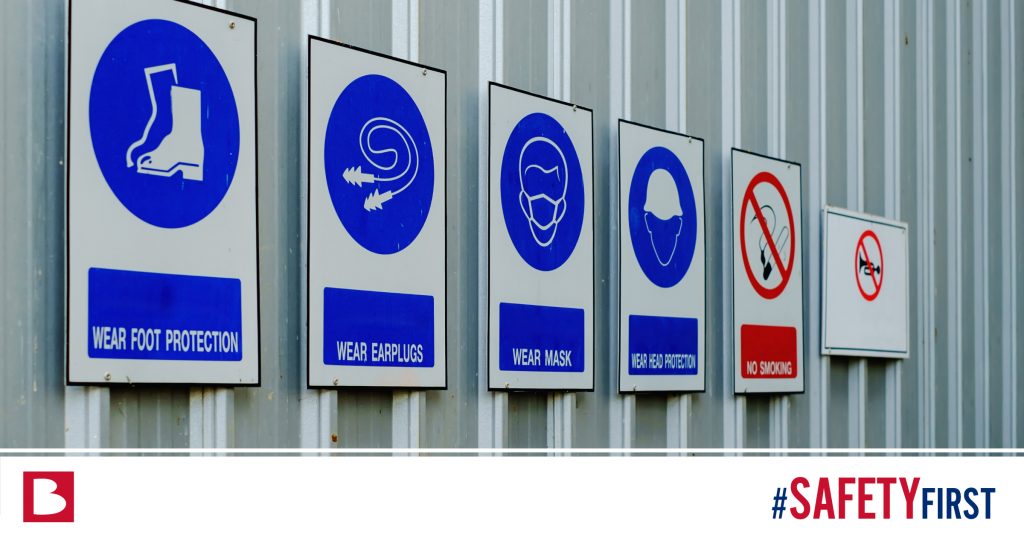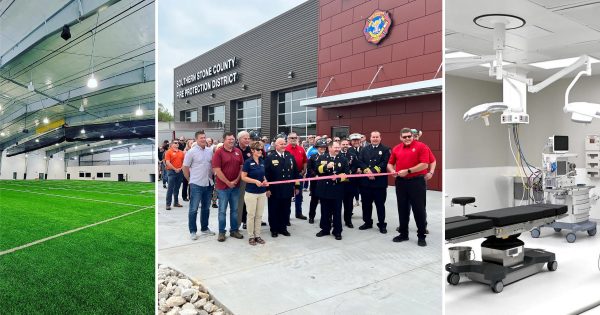Have you been vaccinated yet? COVID-19 Vaccine Awareness Week in Construction is April 19-23. The goal of the campaign is to raise awareness of the safety, effectiveness, and benefits of COVID-19 vaccination among construction workers.
The COVID-19 pandemic caught most industries by surprise. Social distancing, supply chain shortages, and the uncertainty of a dangerous virus we knew little about made navigating the early days of this pandemic tricky. Since mid-2020, the guidance for the public has been largely the same—wash your hands, socially distance, wear a mask, and avoid crowds.
Fortunately, as we navigate 2021 and beyond, there is light at the end of the tunnel. Looking back at the past year, some of these changes will fade to the background while others will stick around permanently. As the masks come off, which new safety efforts will persist?
To answer that, we should first take a look at how our industry reduces COVID-19 spread now.
Current COVID-19 Safety Guidelines for Construction (as of April 2021)
OSHA and the CDC released guidance several times throughout the pandemic to help protect workers in all industries, including construction. In order to make adherence achievable, the safety rules for COVID-19 needed to be simple, easy to remember and clearly defined.
Monitoring & Prevention
Monitoring for COVID-19 is the responsibility of both the employer and the workers. Employers are expected to use the information gleaned from their hazard assessment to make good safety protocols to prevent exposures at work.
While each worksite is unique, control and prevention guidelines can include physical shields or barriers, improved worksite ventilation, social distancing, masking, staggered shift or work times, and appropriate PPE (personal protective equipment).
Workers are expected to do their part by monitoring for virus symptoms and to avoid work if they are sick. If they are exposed to the virus through close contact, workers are must quarantine for 14 days after their last exposure. If they test positive for COVID-19, they must self-isolate until the illness is resolved.
Sanitation
While COVID-19 mostly spreads through aerosols expelled when people talk, sneeze, speak, or cough, it can occasionally spread through surfaces. Enhanced sanitation protocols, like frequent handwashing, liberal use of hand sanitizers, and cleansing high-touch areas several times daily can help keep work areas safe from exposure.
Masking and social distancing
When at all possible, workers should mask and maintain physical distance of at least six feet. Workers should avoid being in enclosed spaces with other employees.
Flexible shift starts
Flexible scheduling is sometimes used to keep the total workers on a job site lower which makes physical distancing easier. With fewer people on-site, alternate workday schedules or extra shifts are sometimes necessary to make sure the work is stilled completed in a timely manner.
Workers need the flexibility to handle potential COVID symptoms responsibly. If they get sick, they should be given the necessary flexibility to quarantine without requiring positive COVID-19 tests or doctor’s note.
Opening Up Construction and Communities
2021 started on a hopeful note with vaccinations underway in the U.S. followed by a dramatic drop in case counts after the holiday season. Unfortunately, the pandemic isn’t over yet. We all need to do our part to keep cases down and help our communities recover.
Vaccination
In Missouri, as of April 9th, all citizens are eligible for the COVID-19 vaccination. This includes construction workers, who were made eligible in phase 3. According to the CDC, fully vaccinated individuals (two weeks after the final shot if they received Moderna or Pfizer; two weeks after the initial shot if they received Johnson & Johnson) are relatively safe to gather indoors and present a low risk of COVID-19 spread.
Unfortunately, supplies of the vaccine are still limited in many areas, which means it could be some time still until the majority of Americans are vaccinated.
Regulations from health officials
Regulation for COVID-19 is mostly left up to local governments, often at the county or city level. Because of this, rules for COVID-19 at work and in daily life vary widely from city to city, county-to-county, and state-to-state. Depending on location, state or local governments in most areas of the United States have developed their plan for gradual reopening.
In the majority of these plans, certain health metrics need to be hit to reduce physical distancing requirements and the final removal of masks in both workplaces and in public come only when the city is mostly clear of infection.
Long-term commercial construction industry changes
No industry was left untouched from COVID-19. As cities open up and restrictions relax, many of the pandemic-related health and safety guidelines will disappear. However, certain cost-saving and worker health-related measures are likely to stick around far after the pandemic ends.
Improved job site sanitation and safety
Increased awareness of sanitation and safety benefits workers far beyond when this pandemic ends. Vigilant handwashing and work area cleaning protocols work to reduce not only the spread of COVID-19 but other illnesses like the cold and flu as well. By keeping increased sanitation measures and coupling them with some level of distancing, outbreaks of common illnesses can be largely mitigated throughout the winter.
More reliance on technology
Building information modeling, bidding software, and other collaborative tools allow for architects, engineers, contractors, and project managers to work together even if they aren’t in the same room. Data-informed from on-site workers and drones can give the team detailed information without stepping foot on the worksite.
While the commercial construction industry was slow to accept technology in the past, this year of social distancing has made managing construction sites, project progress, and workers whether you’re in person or remote easier than ever.
Now that the ball is rolling and the industry is more open to technological advancements, the future for technology in commercial construction is looking bright.
COVID-19 was and continues to be a life-changing event for many of us. While we’re all ready to go back to “normal,” some aspects of our industry will change for the better. The pandemic required construction companies to figure out how to best utilize modern technology, sanitation methods, and worker health to create safe construction sites for all workers.
We hope that the innovative spirit we’ve seen this year will continue to drive our industry forward to a cleaner, safer, and more collaborative workplace for all.


